-
 Bitcoin
Bitcoin $83,159.2924
3.30% -
 Ethereum
Ethereum $1,553.1922
0.80% -
 Tether USDt
Tether USDt $0.9995
0.02% -
 XRP
XRP $2.0146
0.93% -
 BNB
BNB $585.4842
1.16% -
 Solana
Solana $120.5794
5.03% -
 USDC
USDC $0.9999
0.00% -
 Dogecoin
Dogecoin $0.1585
1.06% -
 TRON
TRON $0.2420
2.56% -
 Cardano
Cardano $0.6199
-0.48% -
 UNUS SED LEO
UNUS SED LEO $9.3355
-0.83% -
 Chainlink
Chainlink $12.5523
1.28% -
 Avalanche
Avalanche $18.9709
2.17% -
 Stellar
Stellar $0.2332
0.12% -
 Shiba Inu
Shiba Inu $0.0...01215
2.19% -
 Sui
Sui $2.1773
0.99% -
 Hedera
Hedera $0.1666
-3.18% -
 Toncoin
Toncoin $2.8330
-3.73% -
 Bitcoin Cash
Bitcoin Cash $312.9224
5.99% -
 MANTRA
MANTRA $6.4126
-0.68% -
 Litecoin
Litecoin $75.4754
0.65% -
 Polkadot
Polkadot $3.5440
0.42% -
 Dai
Dai $0.9999
0.02% -
 Bitget Token
Bitget Token $4.3297
2.11% -
 Hyperliquid
Hyperliquid $15.4245
5.95% -
 Ethena USDe
Ethena USDe $0.9987
0.01% -
 Pi
Pi $0.6438
8.19% -
 Monero
Monero $209.0819
3.60% -
 Uniswap
Uniswap $5.1706
0.84% -
 OKB
OKB $52.9695
-1.14%
BitMEX leverage tutorial
Leverage is an effective tool for amplifying trading gains and losses, but it's essential to understand the risks and precautions involved, such as liquidation and emotional decision-making, before using it on BitMEX.
Nov 09, 2024 at 04:30 pm
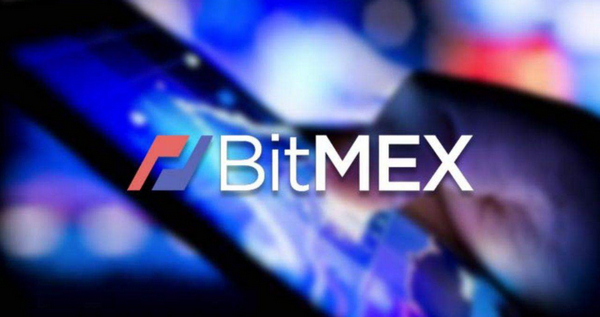
BitMEX Leverage Tutorial: A Comprehensive Guide to Trading with Leverage
1. Understanding Leverage: What Is It and How Does It Work?
Leverage is a financial tool that allows traders to amplify their positions by borrowing funds from a broker. This effectively magnifies both the potential gains and losses of a trade.
- Example: If you have $1,000 in your trading account and use 10x leverage, you can trade with $10,000 worth of capital. This means your potential gains and losses are both multiplied by 10.
2. How Leverage Is Applied on BitMEX
On BitMEX, leverage is applied to the underlying contract value rather than the absolute position size. The contract value is the notional value of the contract, determined by multiplying the contract size by the price.
- Example: Let's say you want to buy 1 contract of BTCUSD perpetual futures with a contract size of 0.001 BTC. At a price of $40,000, the contract value is $40. If you use 10x leverage, you would borrow $360 (90% of $400) from BitMEX. You would then have a total position size of $400 (10% of $400).
3. Calculating Profit and Loss with Leverage
When trading with leverage, it's crucial to understand how profit and loss (PnL) is calculated. PnL is determined by the change in the underlying asset's price multiplied by the leverage applied and the position size.
- Example: If you open a long position of $10,000 with 10x leverage and BTCUSD increases by 10%, your PnL would be $1,000 ($10,000 x 0.10).
4. Risks Associated with Trading with Leverage
Leverage can greatly enhance trading returns, but it also amplifies losses. The following risks should be considered:
- Liquidation: If the market moves against your position and your account equity falls below a certain threshold, your position may be liquidated.
- Increased Volatility: Leverage magnifies both gains and losses, resulting in increased volatility and potential for large swings.
- Emotional Trading: Leverage can lead to emotional decision-making as traders chase profits or try to recover losses quickly.
5. Precautions Before Trading with Leverage on BitMEX
To mitigate the risks associated with leverage, consider the following precautions:
- Start Small: Begin with a small amount of leverage (e.g., 2-5x) until you become familiar with its effects.
- Manage Risk: Use proper risk management techniques such as stop-loss orders, position sizing, and limiting leverage.
- Understand Liquidation: Familiarize yourself with BitMEX's liquidation policy and the factors that can trigger it.
- Practice Discipline: Stick to your trading plan and avoid impulsive decisions.
- Consider Trading Bots: Use automated trading bots to execute trades with pre-defined parameters and minimize subjective decision-making.
6. Choosing the Right Leverage Setting for Your Strategy
The optimal leverage setting depends on your trading strategy, risk tolerance, and market conditions:
- Scalpers: Scalpers who frequently enter and exit trades with small gains generally use higher leverage (e.g., 5-10x).
- Day Traders: Day traders who hold positions for a day or less may use moderate leverage (e.g., 2-5x) to balance risk and reward.
- Swing Traders: Swing traders who hold positions for days or weeks typically use lower leverage (e.g., 1-2x) to manage risk.
- Long-Term Investors: Long-term investors who hold positions for months or years may not use leverage at all.
7. Alternative Trading Options on BitMEX
Aside from using leverage, BitMEX offers other trading options:
- Non-Leveraged Trading: Open long or short positions without leverage, providing lower risk and a more traditional trading experience.
- Cross Margin: Use your entire account balance as collateral for multiple positions, allowing for higher potential returns but also increased risk.
- Isolated Margin: Allocate a specific amount of funds to each position, restricting risk to the allocated funds only.
Disclaimer:info@kdj.com
The information provided is not trading advice. kdj.com does not assume any responsibility for any investments made based on the information provided in this article. Cryptocurrencies are highly volatile and it is highly recommended that you invest with caution after thorough research!
If you believe that the content used on this website infringes your copyright, please contact us immediately (info@kdj.com) and we will delete it promptly.
- SEI Price Formed a Falling Wedge Pattern, Which Historically Signaled a Bullish Breakout
- 2025-04-12 11:00:13
- Cardano (ADA) Builds Toward $0.90 Milestone Amid Renewed Optimism
- 2025-04-12 11:00:13
- Does Stake.us Use Real Money? Here's The Truth About Their Games and How to Get Free Stake Cash (SC)
- 2025-04-12 10:55:13
- The Bank of England’s Financial Policy Committee (FPC) said in its April 2025 record that while stablecoins continue to grow in scale and relevance
- 2025-04-12 10:55:13
- Troller Cat ($TCAT) - The New Meme Coin You Shouldn't Miss
- 2025-04-12 10:50:13
- Priced at Just $0.025, This Emerging DeFi Crypto Is Attracting Long-Term Investors
- 2025-04-12 10:50:13
Related knowledge
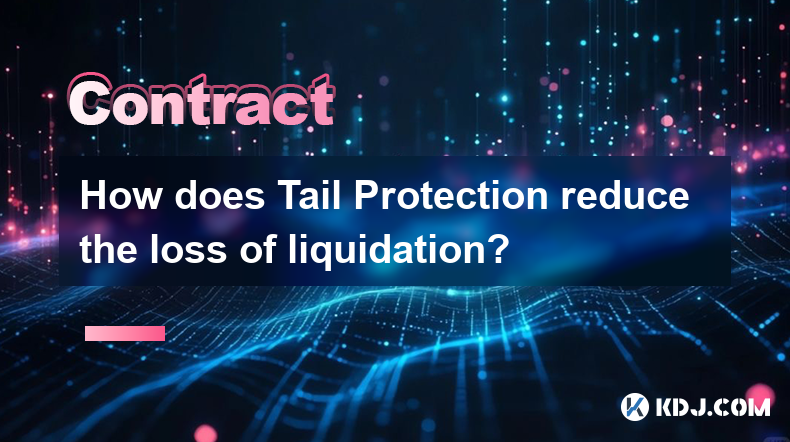
How does Tail Protection reduce the loss of liquidation?
Apr 11,2025 at 01:50am
Introduction to Tail Protection in CryptocurrencyTail Protection is a mechanism designed to mitigate the risks associated with liquidation in cryptocurrency trading. Liquidation occurs when a trader's position is forcibly closed by the exchange due to insufficient margin to cover potential losses. This often happens in leveraged trading, where traders b...

How to judge the market trend by the position volume?
Apr 11,2025 at 02:29pm
Understanding how to judge the market trend by position volume is crucial for any cryptocurrency trader. Position volume, which refers to the total number of open positions in a particular cryptocurrency, can provide valuable insights into market sentiment and potential price movements. By analyzing this data, traders can make more informed decisions ab...

Why does a perpetual contract have no expiration date?
Apr 09,2025 at 08:43pm
Perpetual contracts, also known as perpetual futures or perpetual swaps, are a type of derivative product that has gained significant popularity in the cryptocurrency market. Unlike traditional futures contracts, which have a fixed expiration date, perpetual contracts do not expire. This unique feature raises the question: why does a perpetual contract ...
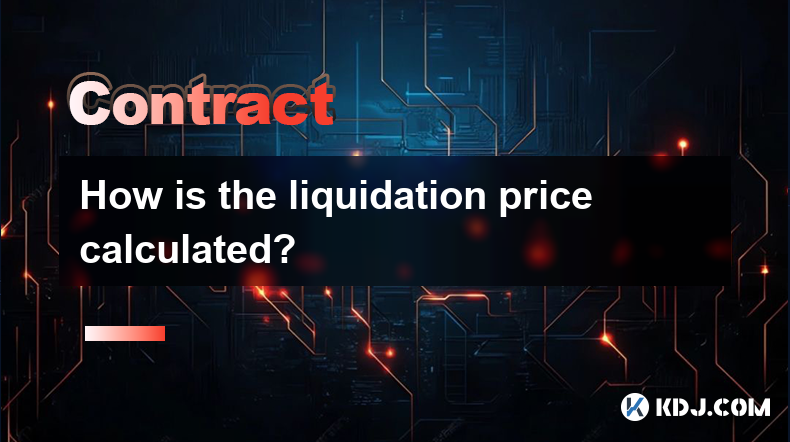
How is the liquidation price calculated?
Apr 12,2025 at 01:35am
Introduction to Liquidation PriceLiquidation price is a critical concept in the world of cryptocurrency trading, particularly when dealing with leveraged positions. Understanding how this price is calculated is essential for traders to manage their risk effectively. The liquidation price is the point at which a trader's position is forcibly closed by th...
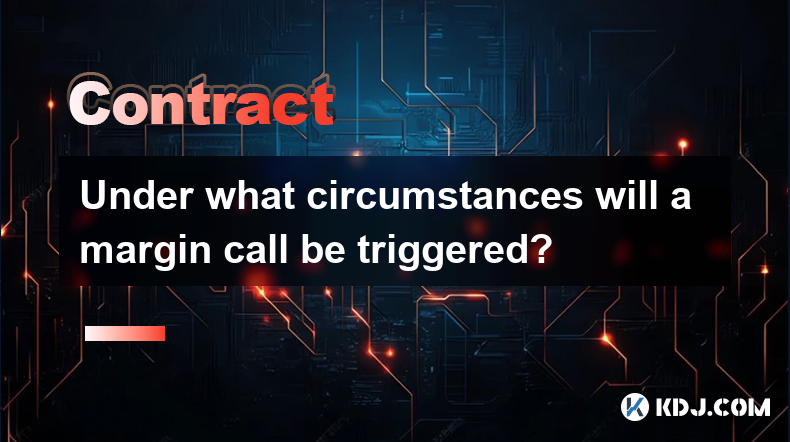
Under what circumstances will a margin call be triggered?
Apr 08,2025 at 02:43pm
Margin trading in the cryptocurrency market allows traders to borrow funds to increase their trading position, potentially amplifying both gains and losses. A critical aspect of margin trading is understanding when a margin call might be triggered, as it can significantly impact your trading strategy and financial health. In this article, we will explor...
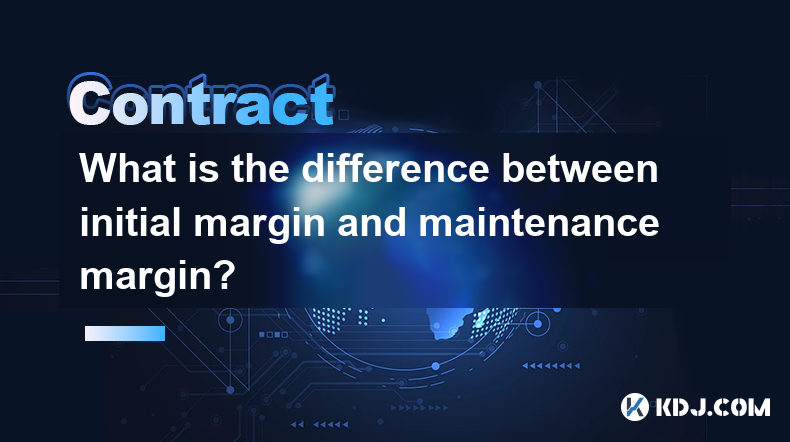
What is the difference between initial margin and maintenance margin?
Apr 11,2025 at 01:14pm
In the world of cryptocurrency trading, understanding the concepts of initial margin and maintenance margin is crucial for managing risk and maximizing potential returns. These terms are fundamental to margin trading, a practice that allows traders to borrow funds to increase their trading position. Let's delve into the differences between initial margi...

How does Tail Protection reduce the loss of liquidation?
Apr 11,2025 at 01:50am
Introduction to Tail Protection in CryptocurrencyTail Protection is a mechanism designed to mitigate the risks associated with liquidation in cryptocurrency trading. Liquidation occurs when a trader's position is forcibly closed by the exchange due to insufficient margin to cover potential losses. This often happens in leveraged trading, where traders b...

How to judge the market trend by the position volume?
Apr 11,2025 at 02:29pm
Understanding how to judge the market trend by position volume is crucial for any cryptocurrency trader. Position volume, which refers to the total number of open positions in a particular cryptocurrency, can provide valuable insights into market sentiment and potential price movements. By analyzing this data, traders can make more informed decisions ab...

Why does a perpetual contract have no expiration date?
Apr 09,2025 at 08:43pm
Perpetual contracts, also known as perpetual futures or perpetual swaps, are a type of derivative product that has gained significant popularity in the cryptocurrency market. Unlike traditional futures contracts, which have a fixed expiration date, perpetual contracts do not expire. This unique feature raises the question: why does a perpetual contract ...

How is the liquidation price calculated?
Apr 12,2025 at 01:35am
Introduction to Liquidation PriceLiquidation price is a critical concept in the world of cryptocurrency trading, particularly when dealing with leveraged positions. Understanding how this price is calculated is essential for traders to manage their risk effectively. The liquidation price is the point at which a trader's position is forcibly closed by th...

Under what circumstances will a margin call be triggered?
Apr 08,2025 at 02:43pm
Margin trading in the cryptocurrency market allows traders to borrow funds to increase their trading position, potentially amplifying both gains and losses. A critical aspect of margin trading is understanding when a margin call might be triggered, as it can significantly impact your trading strategy and financial health. In this article, we will explor...

What is the difference between initial margin and maintenance margin?
Apr 11,2025 at 01:14pm
In the world of cryptocurrency trading, understanding the concepts of initial margin and maintenance margin is crucial for managing risk and maximizing potential returns. These terms are fundamental to margin trading, a practice that allows traders to borrow funds to increase their trading position. Let's delve into the differences between initial margi...
See all articles





















![Crypto Otaku - CRYPTO CHAOS! 83K BITCOIN! CRYPTO RALLY!! XCN , JASMY , SWFTC LEAD!!! [Episode 228] Crypto Otaku - CRYPTO CHAOS! 83K BITCOIN! CRYPTO RALLY!! XCN , JASMY , SWFTC LEAD!!! [Episode 228]](/uploads/2025/04/12/cryptocurrencies-news/videos/crypto-otaku-crypto-chaos-k-bitcoin-crypto-rally-xcn-jasmy-swftc-lead-episode/image-1.webp)

































































